Sustainable Practices for Pottery Enthusiasts
In today's world, where environmental concerns are at the forefront of our minds, it's essential for pottery enthusiasts to adopt sustainable practices that not only enhance their craft but also minimize their ecological footprint. Imagine molding beautiful pieces of art while simultaneously nurturing the Earth! This article delves into various eco-friendly techniques, materials, and tips that can help you create stunning pottery responsibly. Whether you’re a seasoned potter or just starting out, there are countless ways to incorporate sustainability into your creative process.
Selecting sustainable materials is crucial for reducing the environmental footprint of pottery. The right choices can make a significant difference. For instance, consider using natural clays that are locally sourced, which not only supports local economies but also reduces transportation emissions. Additionally, there are plenty of eco-friendly glazes available that are free from harmful chemicals. When it comes to tools, look for those made from sustainable resources or recycled materials. By making informed choices, you can enhance your pottery-making experience and contribute to a healthier planet.
Water usage is a significant concern in pottery, and every drop counts! From mixing clay to cleaning tools, there are numerous methods to conserve water during the pottery-making process. For example, try to use a spray bottle instead of running water when cleaning your tools. This not only saves water but also allows you to control the amount you use more effectively. Additionally, consider setting up a water collection system to reuse water from your cleanup process. By being mindful of your water consumption, you can ensure a more sustainable approach to your craft.
Recycling leftover clay can greatly reduce waste, turning what might seem like trash into treasure. Instead of tossing out those clay scraps, why not reclaim them? This not only saves resources but also allows you to experiment with new techniques. You might be surprised at how much usable clay is left behind! Here are a couple of effective techniques for reclaiming and reusing clay scraps:
- Drying and Rehydrating: Spread your scraps out to dry, then rehydrate them with water when you're ready to use them again.
- Mixing with Fresh Clay: Combine your scraps with fresh clay to create new textures and colors.
Different methods exist for reclaiming clay, such as drying and rehydrating. To effectively reclaim your clay for sustainable use, follow these steps:
1. Gather all your clay scraps. 2. Allow them to dry out completely. 3. Once dried, break them into smaller pieces. 4. Soak the pieces in water until they become pliable. 5. Knead the rehydrated clay until smooth.
Unused clay can be transformed into various artistic projects that not only reduce waste but also enhance your artistic repertoire. Think outside the box! Here are a few innovative ideas:
- Create unique sculptures or decorative items.
- Make beads or small objects for jewelry.
- Craft custom stamps or tools for future projects.
Firing pottery can consume significant energy, but there are eco-conscious firing methods that can minimize your environmental impact. Consider exploring alternative firing techniques, such as pit firing or raku, which often require less energy than traditional electric kilns. Additionally, look into energy-efficient kilns that are designed to use less power while still delivering excellent results. By making these switches, you can enjoy your craft while being kind to the planet.
A sustainable pottery studio minimizes waste through smart practices. One effective strategy is to optimize your material usage. For instance, plan your projects carefully to avoid excess clay and materials. Additionally, make sure to dispose of non-recyclable items properly, and consider composting organic waste generated in your studio. By being proactive about waste management, you can create a more sustainable workspace.
Upcycling materials can breathe new life into old items, fostering creativity and sustainability. Think about how you can repurpose everyday objects in your pottery studio. For example, old containers can serve as tool holders, and broken pottery can be transformed into mosaic pieces. Embracing upcycling not only reduces waste but also sparks innovative ideas that can elevate your work.
Adopting a zero-waste philosophy can transform your pottery practice. It’s about being mindful of consumption and waste management. Start by setting goals for your studio, such as minimizing single-use plastics and finding ways to reuse or recycle materials. Engage with your community to share resources and tips, making sustainability a collaborative effort. By implementing these strategies, you can significantly reduce your environmental impact.
Engaging with the pottery community can enhance sustainable practices. Sharing knowledge and resources with fellow pottery enthusiasts fosters a culture of eco-friendliness. Consider organizing workshops focused on sustainable techniques or creating online forums where potters can exchange ideas. By working together, we can collectively promote eco-friendly practices and inspire others to join the movement.
Q: What are some eco-friendly materials I can use for pottery?
A: Look for natural clays, non-toxic glazes, and tools made from sustainable or recycled materials.
Q: How can I conserve water while making pottery?
A: Use a spray bottle for cleaning, set up a water collection system, and be mindful of your water usage during the entire process.
Q: What should I do with leftover clay?
A: Recycle it by drying and rehydrating, or get creative by using it for new artistic projects.
Q: How can I engage with the pottery community?
A: Join local pottery groups, participate in workshops, or create online platforms to share sustainable practices and ideas.
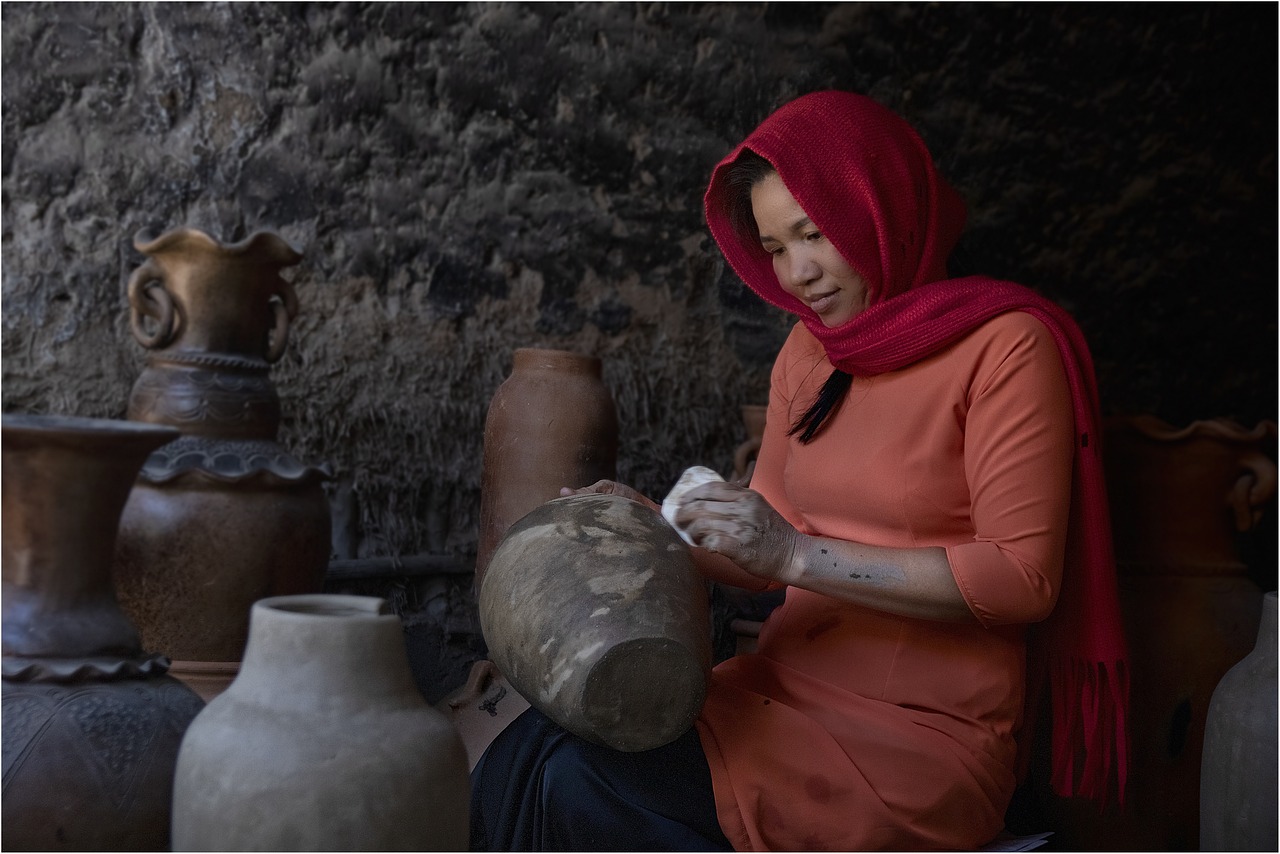
Choosing Eco-Friendly Materials
When it comes to pottery, the materials you choose can make a significant difference in your environmental impact. Selecting eco-friendly materials not only helps protect our planet but also enhances your creativity and connection to your craft. So, what exactly are eco-friendly materials in the world of pottery? Let's dive in!
First off, let's talk about clay. Traditional clay can be resource-intensive, but there are more sustainable options available. For instance, consider using natural clay sourced from local suppliers. This not only reduces transportation emissions but also supports local economies. Additionally, some potters are turning to recycled clay, which is made from reclaimed materials. By using recycled clay, you’re not just minimizing waste; you're also giving new life to materials that would otherwise be discarded.
Next up are glazes. Many commercial glazes contain harmful chemicals that can leach into the environment. Instead, why not explore natural glazes? These are made from earth-friendly ingredients and can create stunning finishes. You can even experiment with ash glazes, which are made from wood ash and can add unique textures and colors to your pieces. Not only do these glazes reduce your environmental footprint, but they also allow you to create one-of-a-kind works of art.
Now, let’s not forget about tools and equipment. Opting for handcrafted tools made from sustainable materials can significantly lessen your impact. Look for tools made from bamboo or recycled metals, which are not only durable but also eco-conscious. Furthermore, consider investing in energy-efficient kilns. These kilns consume less energy and can often be powered by renewable sources, making them a fantastic choice for the environmentally-minded potter.
In summary, choosing eco-friendly materials is a vital step in creating sustainable pottery. By selecting natural clays, exploring non-toxic glazes, and investing in sustainable tools, you can enjoy your craft while being kind to the planet. Remember, every little choice counts, and your pottery can be a beautiful expression of both art and environmental responsibility.

Water Conservation Techniques
Water is an essential resource in pottery making, but it’s also a precious commodity that we must use wisely. As pottery enthusiasts, we have a responsibility to minimize our water usage while still achieving the beautiful results we desire. So, how can we become more mindful of our water consumption during the pottery-making process? Let’s explore some innovative techniques that will help you conserve water without compromising your craft.
One of the first steps in conserving water is to assess your current practices. Are you using more water than necessary when mixing clay or cleaning your tools? A simple change in your approach can make a significant difference. For instance, consider using a spray bottle instead of running water from the tap. This allows you to control the amount of water you use while keeping your clay moist without oversaturating it. It’s a small change, but it can lead to substantial savings.
Another effective technique is to set up a water collection system in your studio. You can use buckets or containers to catch water that would otherwise go down the drain. This collected water can then be reused for various purposes, such as wetting your clay or cleaning your tools. By implementing this system, you not only save water but also create a more sustainable workspace.
When it comes to cleaning your tools, consider using a waterless cleaning method. Instead of rinsing your brushes and sponges under running water, try wiping them clean with a damp cloth. This method not only conserves water but also reduces the amount of clay waste that ends up in your sink. You can also use a small basin of water for rinsing your tools, ensuring that you’re not wasting water with each wash.
It’s also essential to think about the way you mix your clay. Instead of adding water directly to your clay, try mixing dry clay with a small amount of water in a controlled manner. This not only reduces the amount of water you use but also helps you achieve the right consistency without overworking your clay. Remember, every drop counts!
Lastly, it’s important to educate yourself and your fellow pottery enthusiasts about the importance of water conservation. By sharing your experiences and techniques, you can inspire others to adopt similar practices. Consider organizing workshops or discussions in your pottery community to raise awareness about sustainable practices. After all, we’re all in this together, and collective efforts can lead to significant changes.
To summarize, here are some key water conservation techniques for pottery enthusiasts:
- Use a spray bottle for moistening clay.
- Implement a water collection system for reuse.
- Adopt waterless cleaning methods for tools.
- Mix clay with controlled water additions.
- Educate others about sustainable water practices.
By incorporating these techniques into your pottery routine, you can significantly reduce your water usage and contribute to a more sustainable future for our craft. Remember, every effort counts, and together we can make a difference!
Q: Why is water conservation important in pottery?
A: Water conservation is crucial in pottery to minimize environmental impact and ensure that we use this precious resource wisely. Reducing water usage helps preserve ecosystems and supports sustainable practices in the craft.
Q: How can I effectively collect water in my pottery studio?
A: You can set up a simple water collection system using buckets or containers to catch water from rinsing tools or cleaning surfaces. This collected water can be reused for various tasks in your studio.
Q: What are some waterless cleaning methods I can try?
A: Instead of rinsing brushes under running water, try wiping them with a damp cloth. Using a small basin of water for rinsing can also help you conserve water effectively.
Q: Can I still achieve good results while conserving water?
A: Absolutely! By using controlled methods for mixing clay and cleaning tools, you can maintain the quality of your work while also being mindful of your water usage.
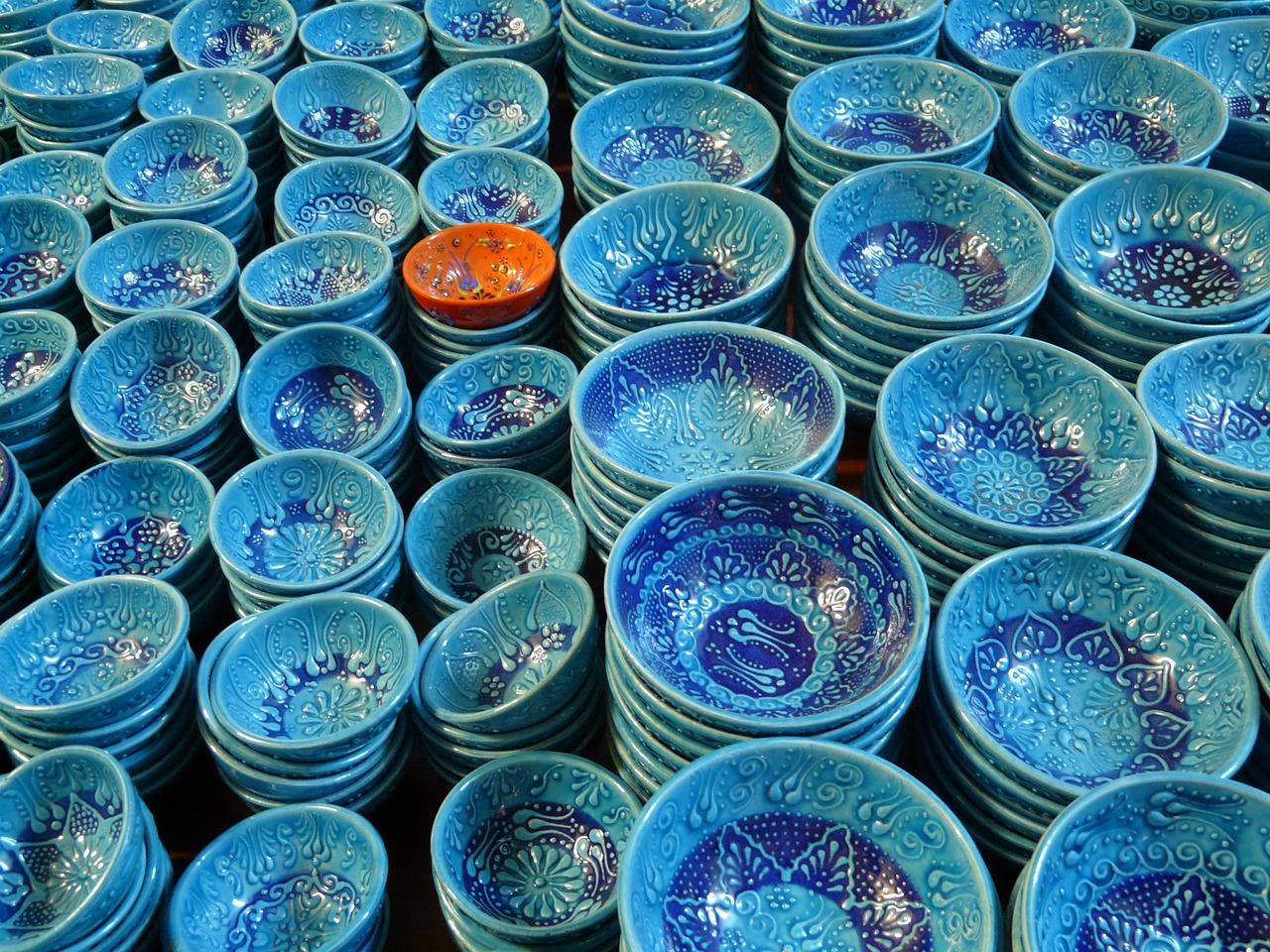
Recycling Clay Scraps
When it comes to pottery, one of the most satisfying aspects is the ability to create something beautiful from raw materials. However, as any pottery enthusiast knows, the process often leaves behind clay scraps that can pile up quickly. Instead of tossing these remnants into the landfill, why not embrace the art of ? Not only does this practice contribute to a more sustainable studio, but it also opens up a world of creative possibilities.
Recycling clay is not just about reducing waste; it's about transforming potential trash into treasure. The first step in this process is to gather your leftover clay. You may find yourself with bits and pieces from trimming, failed pieces, or even excess clay from your initial projects. Instead of viewing these scraps as useless, consider them as a blank canvas waiting for your artistic touch.
One effective method for recycling clay is to reclaim it. To do this, you can follow these simple steps:
- Drying: Spread your clay scraps out on a plaster surface or a large, flat piece of cardboard. Allow them to dry completely. This will make them easier to handle and prepare for rehydration.
- Rehydrating: Once the clay is dry, break it into smaller pieces and soak them in water. Leave them submerged for a few hours or overnight. This will help the clay regain its moisture and pliability.
- Kneading: After rehydration, knead the clay thoroughly to ensure an even consistency. This step is crucial as it helps remove any air pockets and prepares the clay for your next project.
By following these steps, you can effectively reclaim your clay scraps, turning them back into a usable material. This not only saves you money but also reduces the demand for new clay, making your pottery practice more sustainable.
But what if you have clay that you simply can't reclaim? Fear not! There are creative uses for unused clay that can help you minimize waste while still expressing your artistic flair. Consider making small decorative items like beads, buttons, or tiles. These can serve as unique additions to future projects or stand alone as art pieces. Additionally, you can explore sculptural forms, allowing your imagination to run wild.
In summary, recycling clay scraps is a fantastic way to embrace sustainability in your pottery practice. By reclaiming and creatively utilizing leftover clay, you not only reduce waste but also enrich your artistic repertoire. So the next time you find yourself with scraps, remember: they are not waste; they are opportunities waiting to be explored!
Q: Can all types of clay be recycled?
A: Most clay types can be recycled, but it's essential to ensure that they haven't been mixed with non-recyclable materials. Avoid mixing different clay bodies as this can affect the quality of the reclaimed clay.
Q: How long can I store recycled clay?
A: Recycled clay should be stored in an airtight container to prevent it from drying out. If stored properly, it can last for several months.
Q: What if my reclaimed clay has a different texture or color?
A: It's normal for reclaimed clay to have slight variations in texture or color. Mixing it thoroughly can help achieve a more uniform consistency.
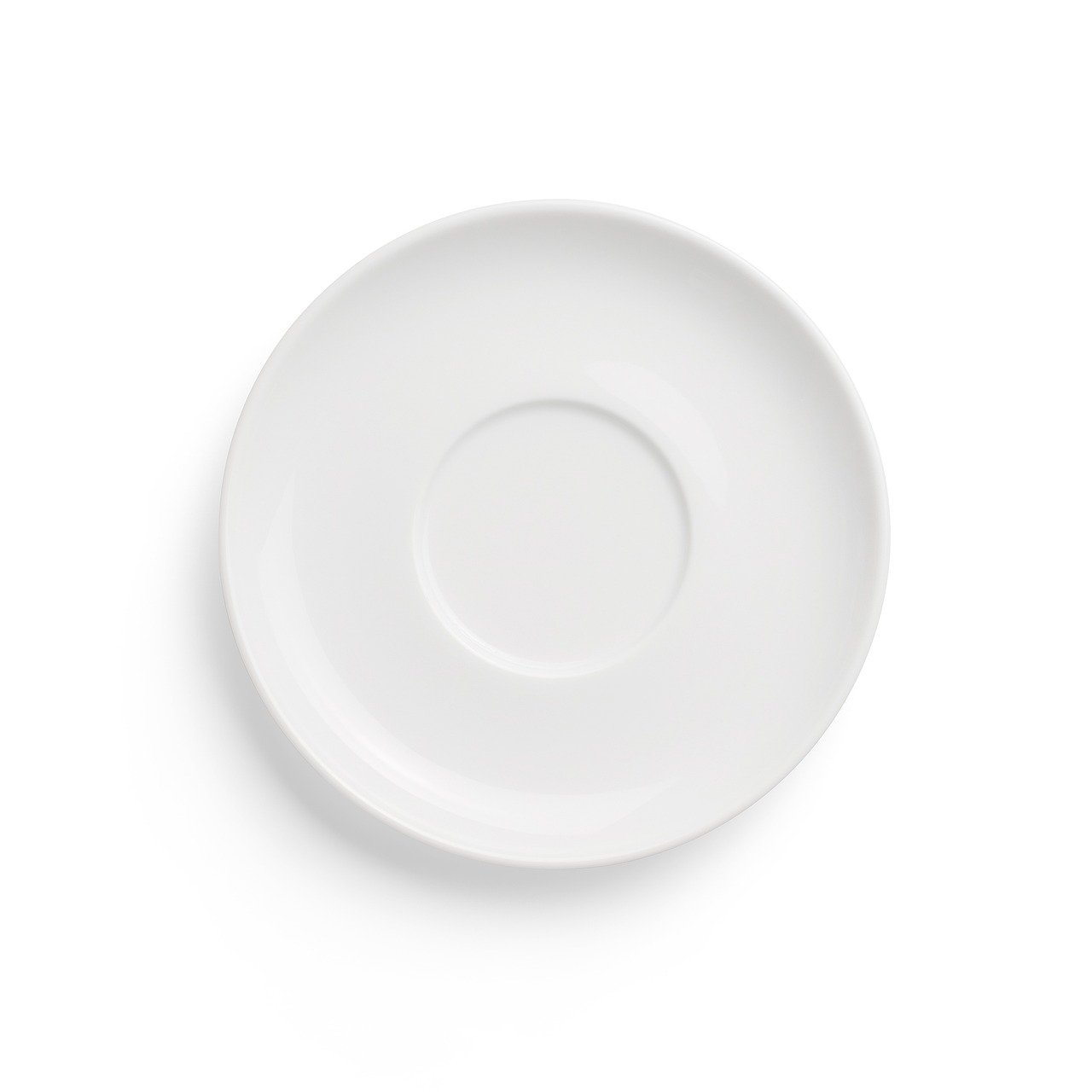
Methods for Clay Reclamation
Reclaiming clay is not just a sustainable practice; it's an art form in itself. When you think about it, every piece of clay holds potential, and with the right techniques, you can breathe new life into what might otherwise be discarded. So, how do you go about reclaiming your clay? Let's dive into some effective methods that can help you minimize waste while maximizing creativity.
One of the most common methods for clay reclamation is the drying and rehydrating technique. This process involves allowing your leftover clay scraps to dry out completely. Once they have dried, you can break them into small pieces and soak them in water. After a few hours, the clay will begin to rehydrate, turning back into a workable consistency. It's like magic, transforming what was once considered waste into a new canvas for your artistic expression!
Another effective method is the slip method. This involves mixing your leftover clay scraps with water to create a slip, which is a liquid form of clay. You can use this slip for various applications, such as casting or even as a decorative element in your pottery. By employing this method, you're not just reclaiming clay; you're also enhancing your projects with unique textures and designs.
For those who prefer a more hands-on approach, consider the wedging technique. After drying your scraps, you can knead the clay as you would with fresh clay. This not only helps to reintroduce moisture but also ensures that any air bubbles are removed, resulting in a smoother consistency. Think of it as giving your clay a rejuvenating massage, preparing it for its next artistic journey!
It's essential to keep in mind that the success of these methods greatly depends on the type of clay you're using. Some clays, like stoneware, may respond better to certain reclamation techniques than others. Therefore, it's wise to experiment and find what works best for your specific materials. As you explore these methods, you might even discover your own unique technique for reclaiming clay, turning waste into a resource that fuels your creativity.
In conclusion, reclaiming clay is not only a sustainable practice but also a way to deepen your connection with your craft. By incorporating these methods into your pottery routine, you’ll not only reduce waste but also enhance your artistic repertoire. Remember, every scrap of clay has a story waiting to be told—so don’t let it go to waste!
- What types of clay can be reclaimed? Most types of clay can be reclaimed, including earthenware, stoneware, and porcelain. However, the effectiveness of the reclamation process may vary based on the clay's composition.
- Can I mix different types of clay when reclaiming? While it is possible to mix different types of clay, be mindful that they may have different firing temperatures and shrinkage rates, which can affect the final product.
- How long does the reclamation process take? The time required for reclamation can vary. Drying clay may take several days, while rehydrating it can take a few hours. Planning ahead is key!
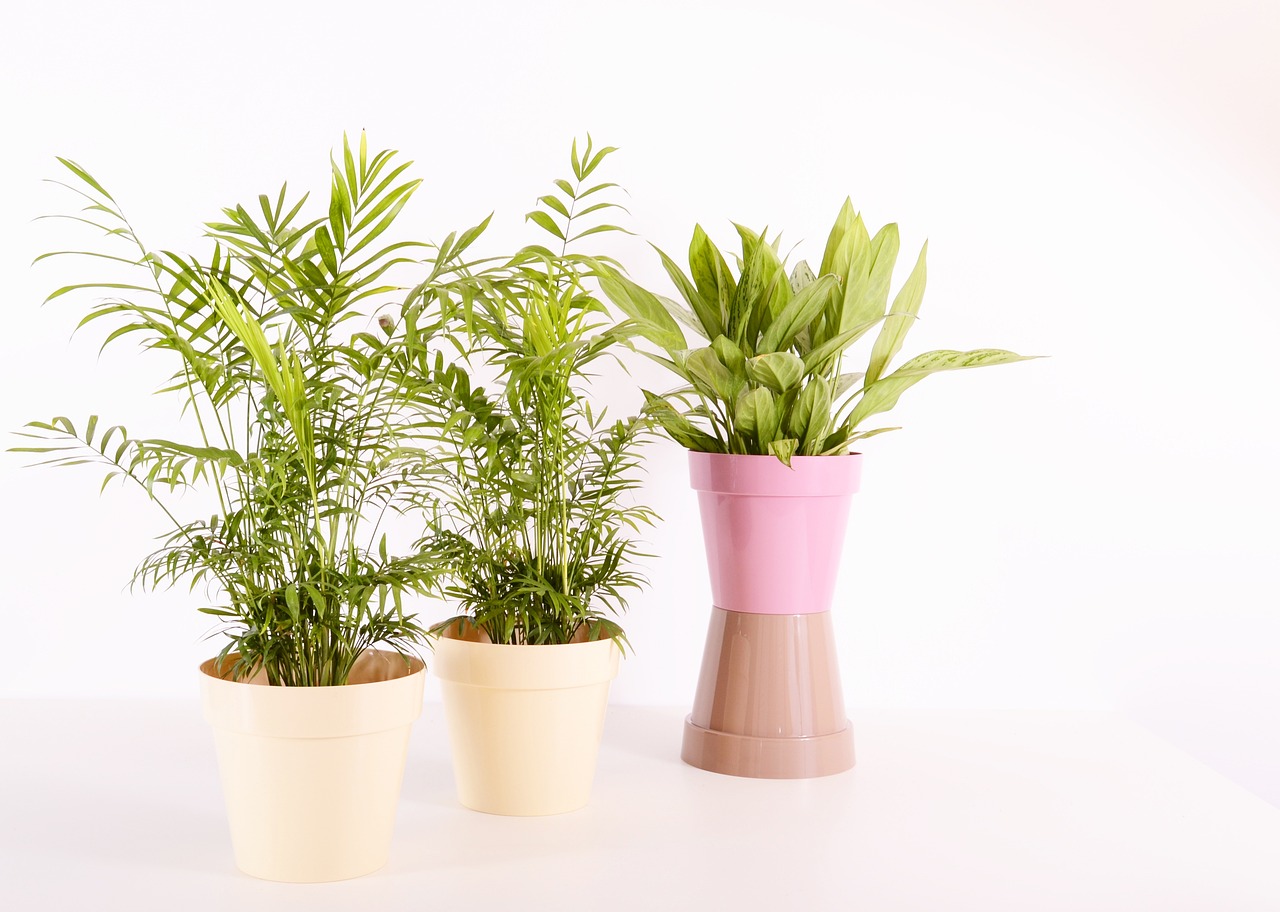
Creative Uses for Unused Clay
So, you’ve just finished a pottery session, and there’s a pile of unused clay sitting there, staring at you, right? Instead of tossing it aside or letting it dry out, why not unleash your creativity and transform that leftover clay into something beautiful? Unused clay is not just waste; it’s an opportunity waiting to be molded into new forms. Think of it as a blank canvas, ready for your artistic touch!
One fantastic way to utilize leftover clay is by creating small decorative items. These can range from adorable little figurines to charming ornaments that can add a personal touch to your home. For instance, why not craft some whimsical garden gnomes, or perhaps some tiny animals that can sit on your windowsill? The possibilities are endless! You could even make holiday decorations that can be painted and displayed during festive seasons.
Another creative avenue is to make functional pieces. Unused clay can be shaped into unique coasters, small bowls, or even plant pots. Each piece can carry your unique style, and they can serve practical purposes around the house. Imagine sipping your morning coffee from a cup that you made from leftover clay, or having your plants thrive in pots that reflect your artistic flair. Not only does this reduce waste, but it also adds a personal touch to your everyday items.
Have you ever thought about making jewelry? Polymer clay is often used for this purpose, but traditional clay can also be sculpted into stunning pieces. From earrings to pendants, you can create wearable art that showcases your creativity. Once baked and glazed, these pieces can be unique conversation starters and gifts for friends and family.
Let’s not forget about the fun aspect! You can host a pottery party where friends and family come together to create art from unused clay. This not only promotes creativity but also fosters community and collaboration. Everyone can contribute their leftovers, and together you can create a collection of art pieces that reflect your combined talents.
Here’s a quick table summarizing some creative uses for unused clay:
| Creative Use | Description |
|---|---|
| Decorative Items | Craft small figurines, ornaments, or holiday decorations. |
| Functional Pieces | Create coasters, bowls, or plant pots for everyday use. |
| Jewelry | Design and sculpt unique earrings or pendants. |
| Pottery Party | Gather friends to create art from leftover clay together. |
In conclusion, unused clay is far from being a burden; it’s a treasure trove of possibilities. By embracing creativity, you can turn what would be waste into something meaningful and beautiful. So next time you find yourself with leftover clay, remember that the only limit is your imagination!
Q: What can I do with leftover clay?
A: Leftover clay can be used to create decorative items, functional pieces, jewelry, or even to host a pottery party with friends!
Q: How do I prevent unused clay from drying out?
A: Store unused clay in an airtight container or wrap it in plastic wrap to keep it moist until you are ready to use it again.
Q: Can I recycle dried clay?
A: Yes, dried clay can often be reclaimed by soaking it in water and reworking it into a usable state, depending on the type of clay.
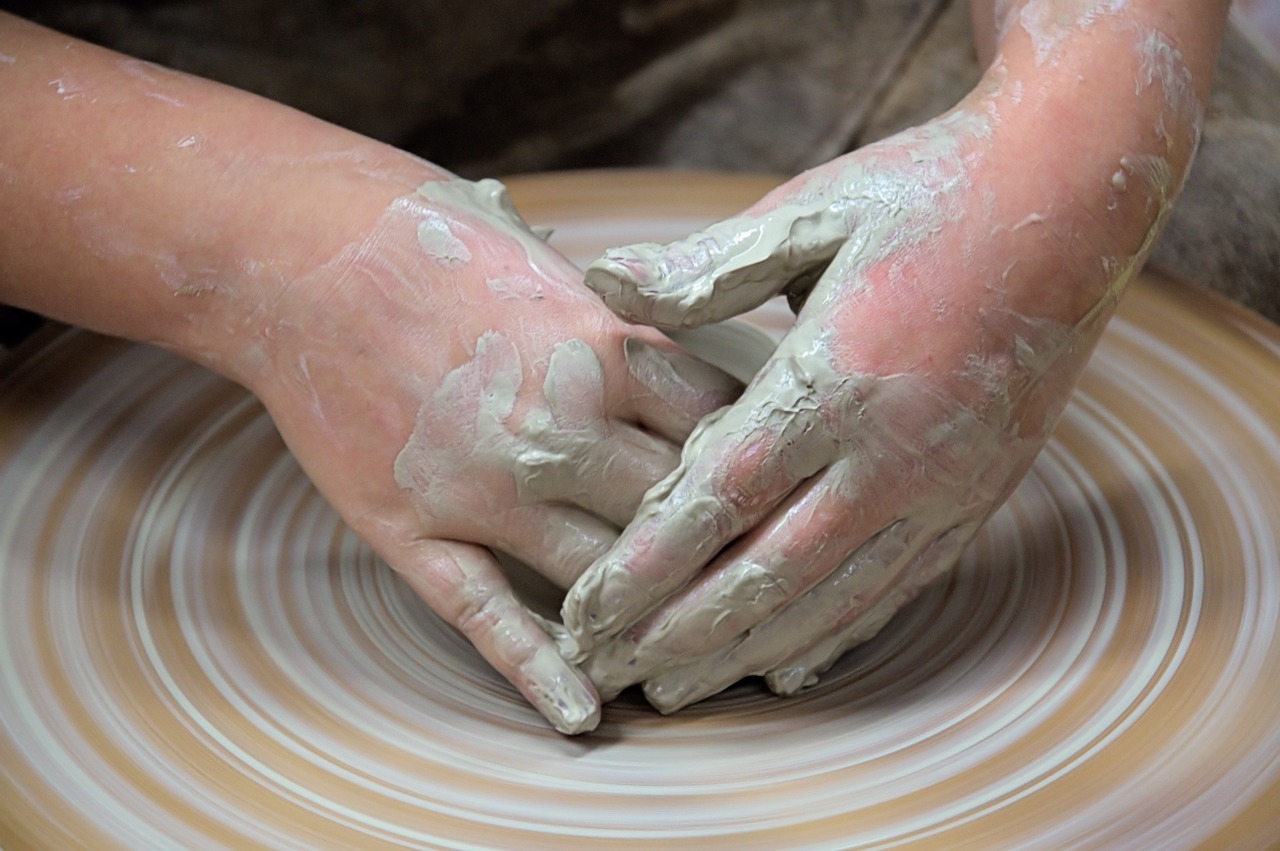
Eco-Conscious Firing Practices
When it comes to pottery, firing is one of the most energy-intensive processes involved. However, there are numerous that pottery enthusiasts can adopt to significantly reduce their environmental impact. By exploring alternative firing techniques and energy-efficient kilns, you can enjoy your craft while being kinder to our planet.
One popular method is alternative firing techniques. These methods often utilize natural materials and can be less energy-intensive than traditional electric or gas kilns. For example, pit firing involves placing pottery in a pit filled with combustible materials, allowing for a unique aesthetic while minimizing energy consumption. Similarly, saggar firing employs a container to hold the pottery during firing, which can also use organic materials to create distinct surface effects.
In addition to alternative methods, consider investing in an energy-efficient kiln. Modern kilns are designed to use less energy while delivering excellent results. They often feature better insulation, programmable controls, and faster heating times. This means you can achieve the same beautiful finishes with a fraction of the energy. To help you understand the differences, here’s a quick comparison:
| Type of Kiln | Energy Consumption | Benefits |
|---|---|---|
| Traditional Kiln | High | Proven results, widely available |
| Energy-Efficient Kiln | Low | Less energy use, programmable controls |
| Alternative Firing | Variable | Unique finishes, minimal energy use |
Moreover, it's essential to consider the materials used during firing. Opting for natural, non-toxic fuels can further decrease your environmental footprint. For instance, using wood chips, corn husks, or other organic materials can create stunning effects while being more sustainable than conventional fuels. Always remember to source these materials responsibly, ensuring they are from sustainable sources.
Another vital aspect of eco-conscious firing practices is temperature management. By monitoring and controlling the firing temperature, you can reduce energy consumption. Use pyrometric cones or digital thermocouples to keep an eye on the kiln's temperature, ensuring that you only use as much energy as necessary. This not only conserves energy but also minimizes the risk of over-firing your pieces.
Lastly, consider collaborating with fellow potters in your community. Sharing a kiln can significantly reduce energy costs and emissions. By pooling resources, you can create a more sustainable pottery practice while building connections within the pottery community. Remember, every small change counts, and together, we can make a significant impact!
Q: What is the most eco-friendly firing method?
A: Alternative firing methods like pit firing and saggar firing are considered very eco-friendly as they often use less energy and natural materials.
Q: How can I reduce energy consumption when firing my pottery?
A: You can reduce energy consumption by using energy-efficient kilns, controlling firing temperatures, and exploring alternative firing techniques.
Q: Is it possible to fire pottery without a kiln?
A: Yes, alternative methods such as pit firing or using a bonfire can be used to fire pottery without a traditional kiln.
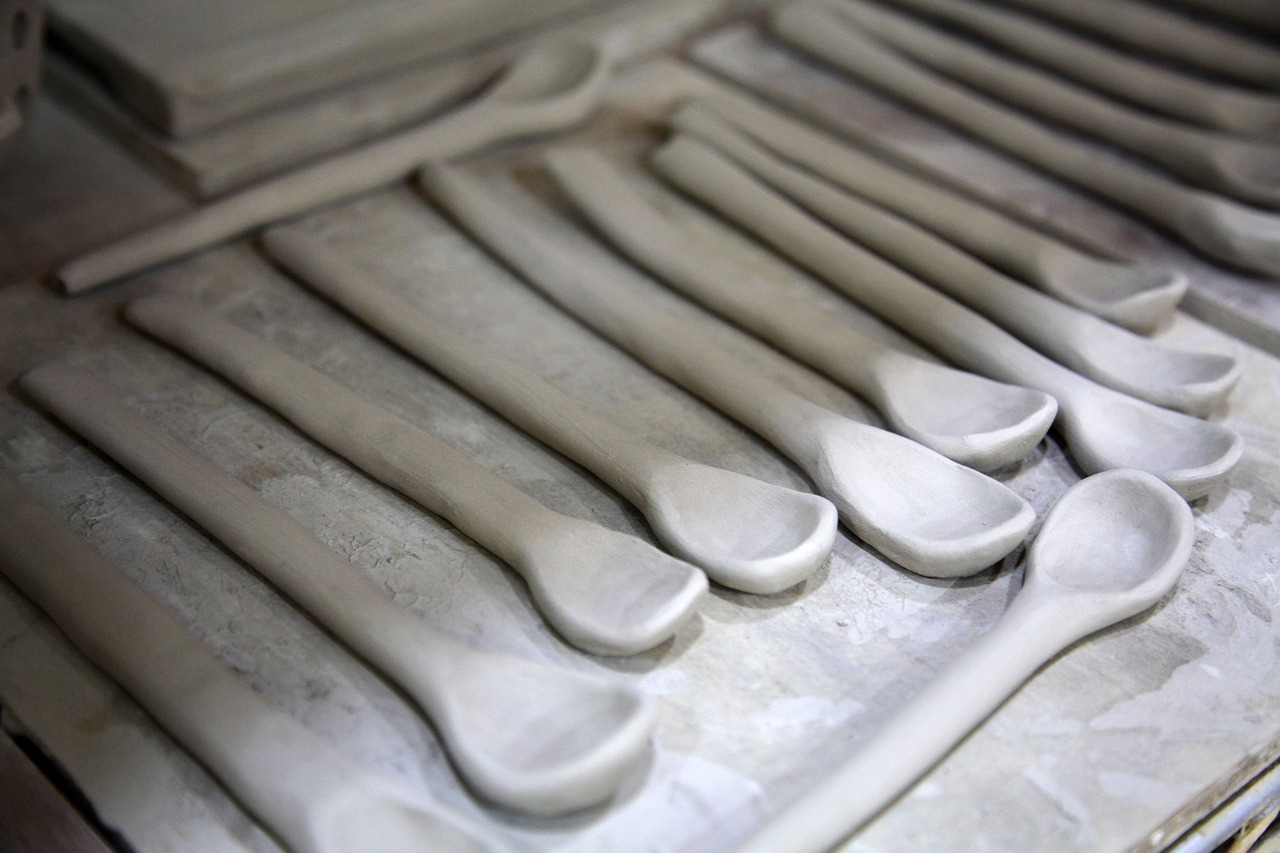
Reducing Waste in the Studio
In the world of pottery, creativity flows as freely as the clay we mold. However, with this artistic freedom comes a responsibility to minimize waste in the studio. By adopting smart practices, pottery enthusiasts can not only enhance their craft but also contribute to a healthier planet. Imagine your studio as a thriving ecosystem where every scrap of clay and every tool has a purpose. How can you achieve this? Let’s dive into some effective strategies that can transform your workspace into a beacon of sustainability.
One of the most impactful ways to reduce waste is by being mindful of material usage. This means planning your projects carefully and only using what you need. For instance, before starting a new piece, take a moment to sketch out your design and calculate the amount of clay required. This simple step can prevent excess material from being wasted. Additionally, consider using smaller batches of glaze and clay, which can help minimize leftovers that often end up in the trash.
Another key aspect of waste reduction is the proper disposal of non-recyclable items. In a pottery studio, it’s common to generate waste that cannot be reused, such as broken tools or certain types of packaging. Instead of tossing these items into the general waste bin, take the time to research local recycling programs or disposal methods. Many communities offer special collection days for hazardous materials, ensuring that they are disposed of safely and responsibly. By adopting a proactive approach to waste management, you can significantly lessen your environmental impact.
Moreover, implementing an efficient organization system in your studio can drastically reduce waste. By clearly labeling containers for different materials and tools, you can avoid unnecessary duplication of supplies. For example, if you have a designated area for scrap clay, you’ll be less likely to throw away remnants after each session. Instead, you can reclaim and reuse this clay, turning what would be waste into valuable resources for future projects.
Let’s not forget about upcycling and repurposing materials. Many pottery enthusiasts find joy in transforming old items into new tools or decor. Have you ever thought about using an old wooden pallet as a drying rack or turning broken pottery into garden mosaics? The possibilities are endless! By creatively reimagining what you already have, you can reduce waste while adding a unique touch to your studio.
To illustrate the impact of these practices, consider the following table that outlines common sources of waste in pottery studios and corresponding strategies to combat them:
| Source of Waste | Reduction Strategy |
|---|---|
| Excess Clay | Plan projects carefully; recycle scraps |
| Unused Glaze | Mix small batches; store properly |
| Broken Tools | Repair or find creative repurposing options |
| Packaging Waste | Choose bulk materials; recycle packaging |
By embracing these waste-reducing strategies, you’ll not only enhance your pottery practice but also inspire others in your community to follow suit. Remember, every small change counts, and collectively, we can make a significant impact. So, let’s roll up our sleeves and get creative with our waste reduction efforts!
Q1: What are the best practices for recycling clay scraps?
A1: The best practices for recycling clay scraps include drying them out and rehydrating them when needed. This can be done by breaking the clay into small pieces and letting them air dry, then soaking them in water to regain the desired consistency.
Q2: How can I upcycle materials in my pottery studio?
A2: You can upcycle materials by repurposing old tools, using broken pottery for art projects, or transforming packaging materials into storage solutions. The key is to think creatively about how items can serve a new purpose.
Q3: What are some eco-conscious firing methods?
A3: Eco-conscious firing methods include using energy-efficient kilns, exploring alternative firing techniques like pit firing, and utilizing renewable energy sources whenever possible.
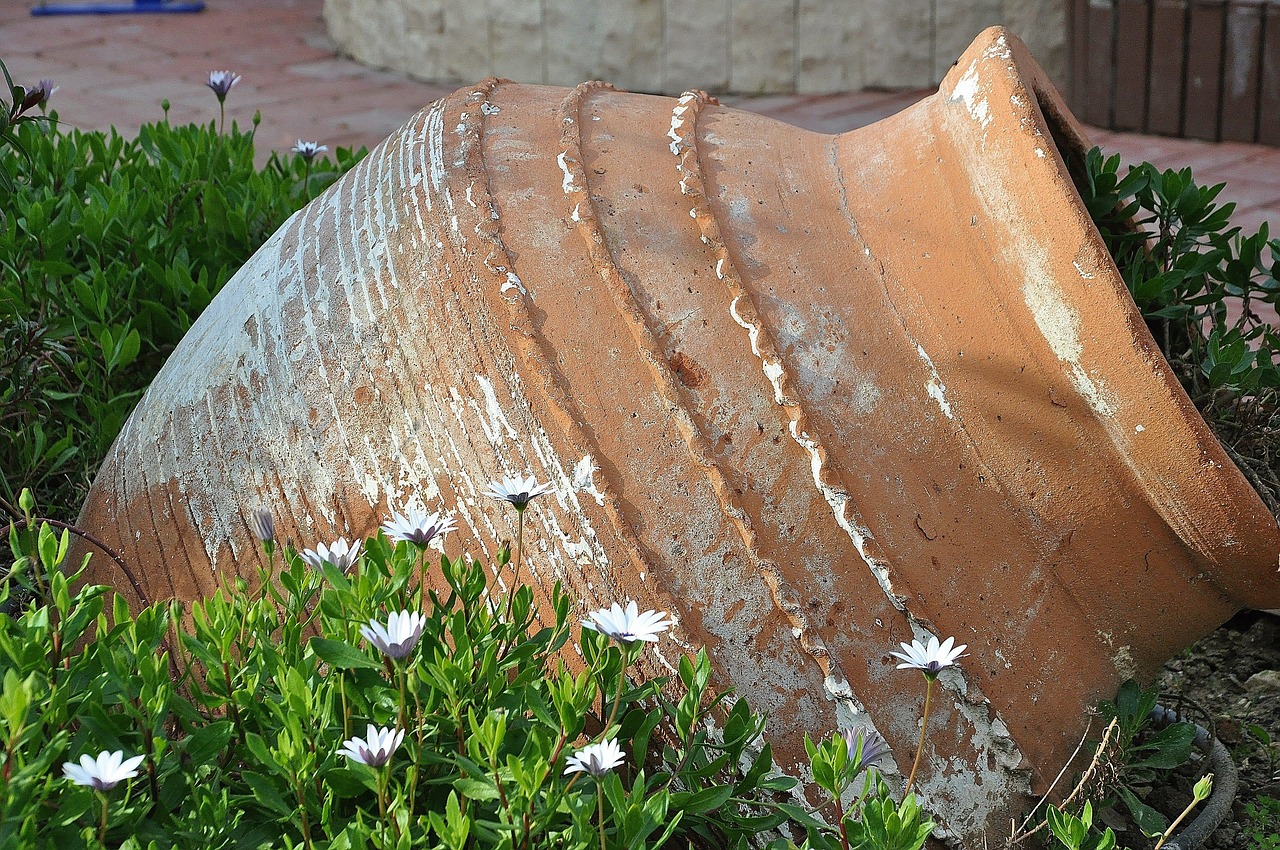
Upcycling and Repurposing Materials
Upcycling and repurposing materials in your pottery studio not only fosters creativity but also promotes sustainability. Imagine transforming what would otherwise be waste into something beautiful and functional! This practice encourages you to think outside the box and see potential in every scrap and leftover material. For instance, old pottery pieces that may have cracks or imperfections can be reimagined into stunning mosaic artworks. Instead of tossing them aside, why not break them down and create a new piece that tells a story of renewal?
Additionally, consider using everyday items that would typically be discarded. For example, glass jars can serve as excellent storage containers for your glazes or tools, while old newspapers can be repurposed as protective layers for your fragile creations. This not only saves money but also minimizes the environmental impact by reducing the demand for new materials.
When it comes to clay scraps, you can get creative as well! Instead of letting leftover clay dry out and become unusable, think about blending different colors of clay together to create unique marbled effects. This not only enhances the aesthetic appeal of your pottery but also ensures that no clay goes to waste.
Here are a few ideas for upcycling materials in your pottery practice:
- Broken Pottery: Use shards in mosaics or as drainage material in potted plants.
- Old Tools: Repurpose them for sculpting or texturing new pieces.
- Packaging Materials: Use bubble wrap or cardboard as cushioning for your finished pottery.
By adopting an upcycling mindset, you not only contribute to a more sustainable pottery practice but also inspire others in your community to do the same. Sharing your projects on social media or at local pottery groups can spark ideas and motivate fellow artists to think creatively about their waste. Remember, every piece of material has a story waiting to be told, and it’s up to you to bring that story to life!
Q: What is upcycling in pottery?
A: Upcycling in pottery refers to the creative process of transforming waste materials or old pottery into new, functional, or artistic items, reducing waste and promoting sustainability.
Q: How can I repurpose broken pottery?
A: Broken pottery can be repurposed into mosaic art, garden decorations, or even as drainage materials in plant pots. Get creative and let your imagination lead the way!
Q: Are there specific materials that are best for upcycling?
A: Almost any material can be upcycled! Common items include broken pottery, glass jars, old tools, and even packaging materials. The key is to see the potential in what others might consider trash.

Implementing a Zero-Waste Approach
Adopting a zero-waste philosophy in your pottery practice isn't just a trend; it's a transformative journey that can reshape how you create and interact with materials. Imagine stepping into your studio and knowing that every piece of clay, every glaze, and even every tool you use has a purpose and a place. This approach encourages you to think critically about your consumption and waste management, leading to a more sustainable and fulfilling creative process.
To start your journey towards a zero-waste pottery studio, consider these actionable steps:
- Mindful Consumption: Before purchasing new materials, ask yourself if you truly need them. Can you use what you already have? This simple question can lead to significant savings and less waste.
- Material Efficiency: Optimize your use of materials by planning your projects carefully. This means measuring your clay accurately and minimizing excess. For instance, if you're making a set of bowls, calculate the exact amount of clay required for each piece.
- Proper Disposal: Not all materials are recyclable, but knowing how to dispose of them responsibly is crucial. Research local recycling programs or hazardous waste disposal options for items that can't be reused.
Moreover, engaging in community initiatives can amplify your efforts. Many pottery groups and workshops focus on sustainability, sharing tips and resources that can help you implement a zero-waste approach effectively. By connecting with like-minded individuals, you can exchange ideas and even collaborate on projects that promote eco-friendly practices.
Another significant aspect of a zero-waste studio is redefining waste. Instead of viewing leftover materials as trash, consider them as opportunities for new creations. For example, leftover clay can be used to make decorative items or practice pieces. This mindset shift turns what might be seen as waste into a valuable resource, enhancing your artistic repertoire.
To further illustrate the benefits of a zero-waste approach, here's a simple table comparing traditional practices with zero-waste practices:
| Traditional Practices | Zero-Waste Practices |
|---|---|
| Excess clay discarded | Reclaimed and reused for future projects |
| Single-use tools and materials | Upcycled tools and materials for multiple uses |
| High energy consumption in firing | Utilizing energy-efficient kilns and alternative firing methods |
By implementing these strategies, you can create a pottery studio that not only minimizes waste but also fosters creativity and sustainability. The journey to zero waste might seem daunting at first, but with each small step, you contribute to a larger movement towards environmental responsibility. So, why not take that leap today? Your pottery practice can be both beautiful and sustainable, proving that art and eco-consciousness can coexist harmoniously.
Q: What is a zero-waste approach in pottery?
A: A zero-waste approach in pottery involves minimizing waste by reusing materials, being mindful of consumption, and finding creative uses for leftover resources.
Q: How can I recycle clay scraps effectively?
A: You can recycle clay scraps by drying them out and then rehydrating them for future use. Techniques like wedging and mixing with fresh clay can help maintain quality.
Q: Are there specific tools that support a zero-waste pottery studio?
A: Yes! Look for tools that are durable and multipurpose. Upcycled tools can also serve as great alternatives, contributing to your zero-waste philosophy.
Q: How can I engage with my pottery community on sustainability?
A: Join local pottery groups or online forums focused on sustainable practices. Share your experiences and learn from others to enhance your eco-friendly approach.
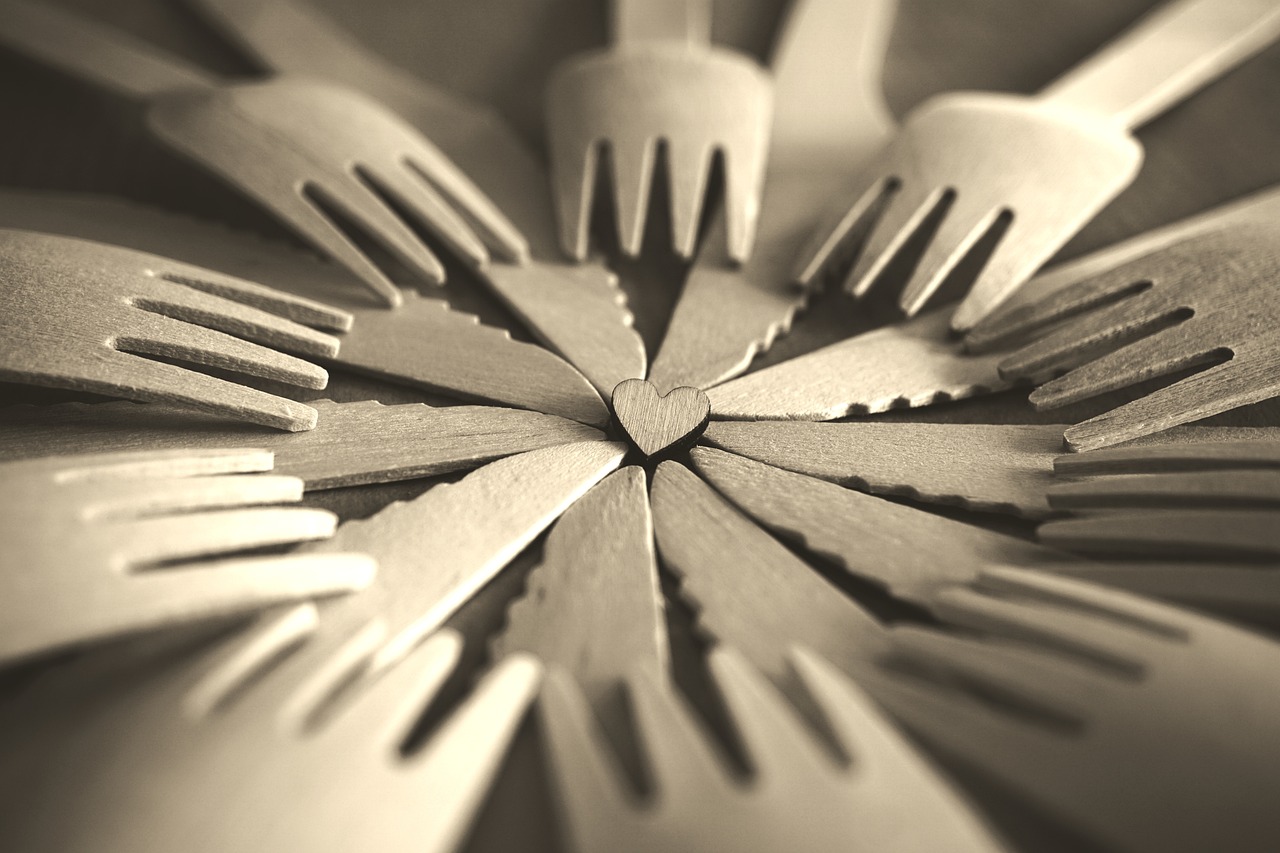
Community Engagement and Education
Engaging with the pottery community is not just a fun way to connect with fellow enthusiasts; it’s a vital component in promoting sustainable practices within the craft. When potters come together, they can share invaluable knowledge, resources, and techniques that can lead to more eco-friendly practices. Imagine a vibrant community where everyone is committed to reducing their environmental footprint while creating stunning pieces of art. It’s like a ripple effect; one small change can inspire others to follow suit.
Education plays a crucial role in this process. Workshops, classes, and local meetups can serve as platforms for sharing sustainable methods, from choosing eco-friendly materials to implementing water conservation techniques. For instance, you might attend a workshop where experienced potters demonstrate how to recycle clay scraps effectively. This not only reduces waste but also fosters a culture of innovation and creativity within the community.
Moreover, community engagement can extend beyond just sharing techniques. Consider organizing events that focus on sustainability, such as community clean-up days or pottery exhibitions that highlight eco-friendly works. These events can raise awareness about the importance of sustainable practices in pottery and encourage others to join the movement. By showcasing your commitment to sustainability, you can inspire others to adopt similar practices.
To further enhance community engagement, consider forming a local pottery group dedicated to sustainability. This group can serve as a hub for exchanging ideas, collaborating on projects, and even advocating for environmentally friendly policies in local art organizations. By working together, you can amplify your impact and create a more sustainable future for the pottery community.
In addition to local efforts, the digital realm offers a wealth of opportunities for education and engagement. Online forums, social media groups, and virtual workshops can connect potters from all over the world. These platforms allow for the sharing of resources, tutorials, and success stories, fostering a global community committed to sustainable pottery practices. Imagine scrolling through your feed and seeing fellow potters from different countries sharing their eco-friendly tips and tricks. It’s a beautiful way to learn and grow together.
Ultimately, community engagement and education are about creating a supportive network that prioritizes sustainability. By sharing knowledge and resources, potters can inspire one another to adopt greener practices, leading to a more sustainable future for the craft. So, why not take the initiative today? Join a local pottery group, attend workshops, or even start your own blog to share your journey towards sustainability. Together, we can create a thriving community that celebrates both art and the environment.
- How can I get involved in my local pottery community? Consider joining local pottery classes, workshops, or art fairs to meet fellow enthusiasts.
- What are some eco-friendly materials I can use in pottery? Look for natural clays, non-toxic glazes, and sustainable tools made from recycled materials.
- How can I reduce waste in my pottery practice? Implement techniques such as recycling clay scraps, using efficient firing methods, and adopting a zero-waste approach.
- Are there online resources for sustainable pottery practices? Yes! Many websites, forums, and social media groups focus on eco-friendly pottery techniques and community engagement.
Frequently Asked Questions
- What are some eco-friendly materials I can use for pottery?
When it comes to eco-friendly pottery, consider using natural clay that is sourced sustainably. Look for glazes that are non-toxic and free from harmful chemicals. Additionally, tools made from recycled or sustainable materials can also help reduce your environmental footprint.
- How can I conserve water while making pottery?
Water conservation is crucial in pottery. You can minimize water usage by mixing clay with just enough water to achieve the desired consistency. Use a sponge or damp cloth to clean your tools instead of rinsing them under running water. Collect and reuse water from your cleaning processes for mixing clay or dampening surfaces.
- What techniques can I use to recycle clay scraps?
Recycling clay scraps is a fantastic way to reduce waste! One effective method is to let the scraps dry out, then rehydrate them by soaking in water. You can also blend smaller pieces into a slurry and use it for slip decoration or as a bonding agent for new projects.
- Are there eco-conscious firing methods I should consider?
Absolutely! Look into alternative firing methods like pit firing or raku, which can be more energy-efficient. Additionally, using energy-efficient kilns can significantly reduce your power consumption during the firing process, helping you to create beautiful pottery while being kind to the planet.
- How can I implement a zero-waste approach in my pottery studio?
To achieve a zero-waste studio, start by assessing your material usage and identifying areas where you can cut back. Use every part of your clay, recycle scraps, and find creative ways to repurpose materials. Also, consider donating or sharing excess items with fellow potters to minimize waste.
- Why is community engagement important for sustainable pottery practices?
Engaging with the pottery community fosters a culture of sharing knowledge and resources. By collaborating and exchanging ideas with other pottery enthusiasts, you can discover new sustainable practices, techniques, and materials that not only enhance your skills but also promote eco-friendly approaches collectively.



















